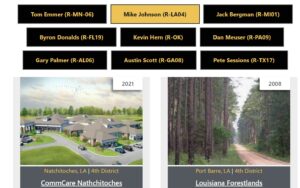The Coalition has internally compiled a list of arguments and talking points in favor of the NMTC, and we figured we’d share them with you on our blog (updated in 2020)
State of play: In December 2020, the NMTC was extended for 5 years through 2025. The bipartisan New Markets Tax Credit Extension Act (H.R. 1321 and S. 456) would extend the NMTC indefinitely and expand allocation authority. The leads in the House are Reps. Kelly (R-PA) and Sewell (D-MA) and the Senate leads are Blunt (R-MO) and Cardin (D-MD).
Talking points:
- The NMTC increases the flow of capital to businesses and low-income communities by providing a modest tax incentive to private investors. The NMTC has proven to be an effective, targeted and cost-efficient financing tool valued by businesses, communities, and More than 2,100 organizations wrote Congress in October of 2017 calling for an extension and expansion of the NMTC.
- From business expansions to new healthcare and childcare facilities, the NMTC program was designed as a flexible incentive for economic development that meets evolving community needs. Instead of Washington picking winners and losers, the New Markets Tax Credit empowers local decision-making on important economic development projects. The nonprofit and industry sectors receiving NMTC financing are diverse, reflecting a cross-section of the American economy.
- A 2017 evaluation and compliance study of the NMTC by the Summit Foundation found that program award winners are lowering the cost of capital in low-income communities, targeting areas of deep economic distress, and far exceeding the program requirements.
- The NMTC has delivered an unprecedented level of investment to America’s low-income communities. Between 2003 and 2015, over $41 billion in NMTC allocation generated $82 billion in total project investments in more than 5,000 NMTC-qualified businesses. Those NMTC investments generated over a million jobs in low-income communities at a cost to the government of less than $20,000 per job.
- While the tax package may bring broad benefits to the economy, the cost of capital remains high in severely distressed communities. The NMTC is a bipartisan solution for economic development in communities hit hardest by economic downturns and the dwindling job opportunities. We should invest in federal programs that work, and the NMTC fits that bill.
- The NMTC targets about 40 percent of the nation’s census tracts that meet the statutory requirements for economic distress. However, most NMTC financing goes to severely distressed communities that far exceed program requirements for poverty and income. From 2003 to 2015, 72 percent of NMTC projects were located in severely distressed communities;
- The federal tax revenue generated by NMTC investments more than pays for the cost of the program. For example, in 2015, the NMTC generated $15.2 billion in economic activity, and this activity generated $872 million in federal tax revenue, more than enough cover the $759 million annual cost of the program in 2015, and provided an annual return of $113 million, or 15 percent;
- By stabilizing and revitalizing local economies, the NMTC helps boost tax revenue for state and local governments. Between 2003 and 2015, NMTC investments generated $6.7 billion in state and local tax revenue, including $502 million in 2015 alone;
- The NMTC enhances community revitalization efforts by financing community facilities and other important quality of life amenities. Between 2003 and 2015, the NMTC financed nearly 2,000 community services and facilities, including hospitals, schools, nonprofit service providers, and day care centers;
- After more than a decade of investments, the NMTC has touched the lives of millions of individuals, from the 17 million patients served by NMTC-financed healthcare projects to the nearly 250,000 students and children attending NMTC-financed schools or cared-for in early-childhood learning centers; and
- Over the years, as the program has matured, NMTC financing has increasingly gone to rural communities, areas experiencing severe economic distress, and for healthcare facilities, manufacturing businesses, and other high-impact projects combining service-delivery and job creation.





